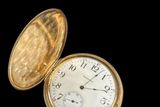Boneshakers cost a pretty penny
Old bicycles, tandems, tricycles, velocipedes, penny-farthings and hobby horses keep appearing at regular intervals in the international auction rooms and the very rare, and very old, examples can fetch serious money.
The hobby horse - much like larger versions of the pedal-less balance bikes we give to young children today - was the ancestor of the bicycle and had its origins in France when a two-wheeled contrivance put together by a M. de Sivrac made its appearance in the streets of Paris in 1690. The idea did not catch on with the public, probably because of the absence of pedals.
With the hobby horse, the rider propelled himself along by the alternate thrust of each of his feet on the ground while straddled on a seat on a crossbar connecting the two wheels.
Hobby horses were really overgrown toys and were sometimes known as dandy horses given that they were more likely the toys of flamboyantly dressed society types. In Germany in about 1817 the hobby horse was called a 'draisine' from the name of a gentleman named Von Drais who popularised it.
Still, they can do quite nicely in the salerooms.
The terms "bicycle" (bi for two wheels) and tricycle (tri for three) first appeared in the Journal de Paris on 27 July 1789.
However, the first real bicycle as we know it came into being in 1839 when a Scotsman named Kirkpatrick Macmillan, who was a blacksmith in Dumfries, Scotland, invented a machine driven by treadles connected to the back wheel. He used to ride long distances on his bicycle and, after a forty mile ride, was once fined five shillings by a magistrate in Glasgow after he had knocked over a child.
Subsequently, the inventive impetus appears to have been concentrated upon tricycles and gigantic four-wheelers called quadricycles although even to the present day, these were never successful due to their clumsiness. Meanwhile, the idea of a two-wheeler was shelved for a time.
The velocipede was an early form of two-wheeler and made its appearance in the 1860s. It was also called a boneshaker. Made of wood and iron, the velocipede was very heavy and required a good deal of energy to propel it along the rough Victorian roadways. Nevertheless, it did have pedals connected to the front wheel and a rear brake was provided.
Because of its solid construction - even the tyres were made of iron and wood - many have survived and fetch good prices when in good condition.
The Ariel bicycle was invented in 1871 by an Englishman called James Starley. It was the first of a series of 'high' bicycles and they were called 'ordinaries'. The large driving wheel and very small rear wheel eventually gave way to the name 'penny-farthing', by which it is known today.
The Penny-farthing was the first really efficient bicycle and the machines remained in fashion for twenty years. The large wheels varied in diameter from about 54 inches to 60 inches for really tall men. Riding these machines required real skill and if mounting them was awkward, beginners found dismounting them even more difficult. As for speed, this form of bicycle could outpace a horse.
By the end of the 1860s, inventors were applying themselves diligently to the task of improving the two-wheeler. Hard rubber tyres replaced the wooden and iron ones in 1868. Wire spokes took over from wooden ones in 1869, and as the years passed many improvements helped the bicycle become a definite part of life in Europe and the United States.
Easier riding and exceptional speed was provided in 1885 when Starley created a bike with the front wheel only slightly larger than that of the rear.
An Irishman named J.B. Dunlop, who was a veterinary surgeon in Belfast, invented the pneumatic tyre in 1888. The comfort, lightness and speed attained by riding on air made the new tyres an instant success.
Many motorists are surprised when they learn that the pneumatic tyre was first used on bicycles. And the first successful aeroplane was designed by Wilbur and Orville Wright, who were bicycle makers.
Prices of old bicycles can be very expensive at auctions. Some can run into thousands although interesting bikes from the early 20th century can still be bought for a few pounds. And there are many valuable examples still lying around in odd places in Ireland. Good condition is a priority, however.
Join the Irish Independent WhatsApp channel
Stay up to date with all the latest news














